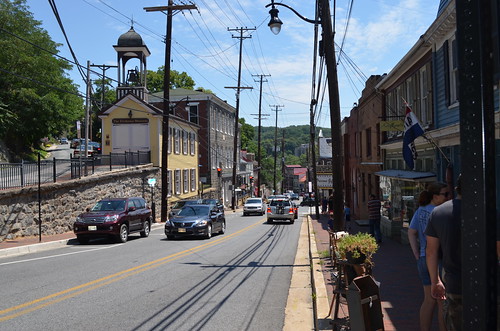
Over the weekend, this strip was devastated in a flash flood.
The newly upgraded flood protection system that surrounds New Orleans, meanwhile, is rated to withstand a 100 year storm. And that's a generous estimate."Workers inspected approximately 200 properties in Ellicott City. Four to five of those properties are destroyed," said Kittleman. "Another 20 to 30 suffered substantial damage. It has yet to be determined when individuals will be allowed to return to their homes and businesses."The bodies of the victims, identified as Joseph Anthony Blevins, 38, and Jessica Watsula, 35, were recovered after they were both swept away in separate incidents, according to Baltimore County officials.The flooding was historic. The National Weather Service said the chances of such an extreme weather event are less than 0.01 percent, making it likely to occur just once in 1,000 years.
Some engineers even question the ability of New Orleans' new levee system to protect from flooding caused by a 100-year storm.There's also the matter of who pays for these upgrades when or if they occur. We haven't quite worked out fully who will pay for the current system.
Bob Jacobsen, a Baton Rouge-based engineer hired by the east bank levee authority, conducted a surge modeling study that indicated some earthen levee locations could be overtopped today by waves atop storm surges from a 100-year storm. The model also showed that significant parts of the east bank system will have subsided below the 100-year design level long before the levees' 50-year life expires in 2057.
Earlier this year, the corps agreed with part of his findings and recommended that its levee designs be reanalyzed by 2018.
The state of Louisiana's 2012 coastal Master Plan for restoration and protection calls for increasing the level of risk reduction for the New Orleans system to 500 years. But that's a project that won't begin until 2035, said Kyle Graham, executive director of the Coastal Protection and Restoration Authority.
Louisiana soon will be asking the rest of the nation for some love -- about $3.5 billion worth.Every little (or big) bit helps. We do know we'll need to find more money to throw at this problem soon enough. We also know that 1,000 year events happen.
That’s what the state will owe the U.S. Army Corps of Engineers over the next 30 years as its share of the cost of the New Orleans area's new $14.5 billion hurricane defense system that's due to be completed by 2018.
Louisiana wants that debt waived so it can spend the money instead on stopping the rapid loss of the bottom third of the state from subsidence and a rising sea level, said Johnny Bradberry, Gov. John Bel Edwards’ executive assistant for coastal activities.
“If the state has to come out of pocket with $100 million a year for the next 30 years for this debt, that puts a pretty big hole in what we are trying to accomplish with the coast,” Bradberry said. “That’s why we’re asking to have this forgiven.”
No comments:
Post a Comment